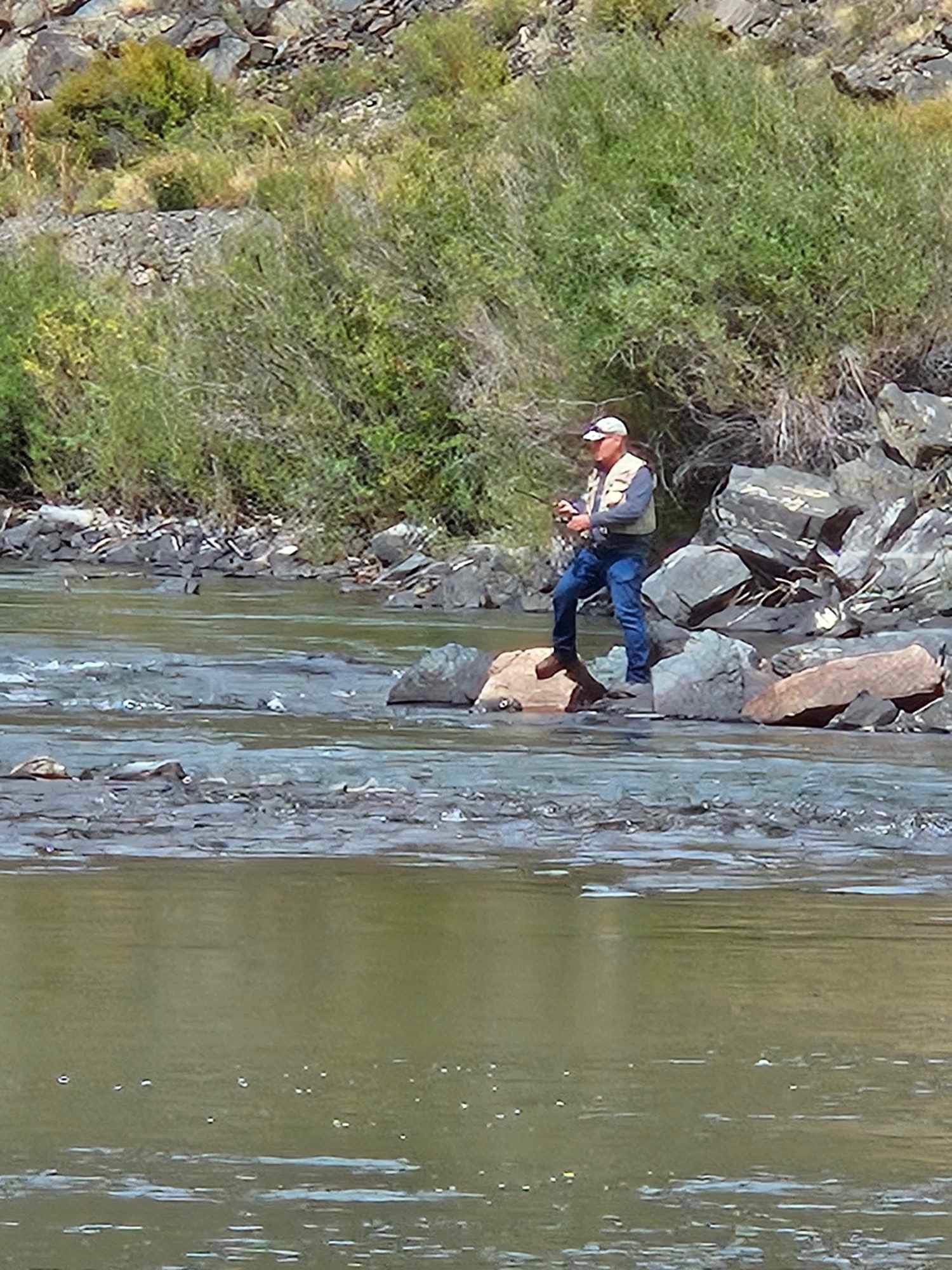A River Runs Through It
Sometimes you just need to get away. Last week, I got one of those chances.
I got a chance to spend a few days enjoying the fresh mountain air. I paired up with a small group of longtime friends from my high school and college days and spent some time high in the Colorado mountains. We did some fishing, and a little bit of trail riding and a whole lot of catching up. The stories were flowing and the memories just kept coming back. It was a great time!
We did a fair amount fishing while we were there. That’s something I don’t do very often any more, but I used to fish all the time as a kid. That’s how my cousin and I spent our summers. It was either their farm pond or the creek in between us. We’d spend the whole day out there harassing the fish.
But that was a long time ago and now, my fishing outings are few and far between. What I’m trying to say is, I’m definitely not an expert angler... but I still like to fish. And I especially like to fish in the mountains. I could spend all day doing that! Standing next to a mountain stream, taking in the scenery, listing to the splash of the water and the sound of the wind blowing through the trees… that’s just magic. I don’t even care if I catch anything.
I took my old fly rod. I bought that thing 30 years ago, and it’s been gathering dust out in the garage ever since. It didn’t take me long to get back in to groove though...10 and 2, 10 and 2. It’s was just like riding a bike.
Cameron Rees, General Manager
Anyway, it was beautiful, I’m refreshed... and now I’m ready to hit the fall season. We got a lot of fresh trees, shrubs and other plants out here, and the pumpkins just arrived. Now it really looks like fall!
Hope to see you around the nursery.
What’s New?!
Persimmons
Actually, there’s nothing new about persimmons in general. We’ve carried those for years. They’re a great native tree and if you’re willing to let them fully ripen, they’re a tasty treat. (Bite into them a little too early and you’ll be puckered up from here to next week... you’ll only make that mistake once!)
What is new for us are the grafted persimmon varieties we just received. I’ve been trying to get our hands on these for a couple of years now and I’m excited to have them in now and ready for fall planting.
These grafted forms are all improved forms of our native American Persimmon. The reason for their selection may vary slightly, but they all revolve around the fruits.
‘Elmo’ – Heavy bearer. Ripens from October to November. Very sweet when ripe. Selected for reliable harvest and large fruits along with good resistance to diseases and insects. May be self-fertile, but a pollinator would be a good idea.
‘Garretson’ – Selected for its large, sweet fruits. Partially self-fertile but will produce heavier when planted with a cross pollinator. Ripens in early October. Fruits are up to 1.5” in diameter.
‘Meader’ – Large fruits, up to 2” in diameter. Self-fertile form. Fruits will be seedless if not cross pollinated. If they are pollinated, there will be seeds.
‘Prok’ – This one tends to be self-pollinating. Produces large crops of sweet, juicy fruits. Often rated as one of the best tasting American persimmons.
We also have native seedling forms as well.
Decorate for Fall
Do you know what time of year it is? Pumpkin Spice everything time!
I actually tried a Pumpkin Cream Cold Brew a couple weeks ago… first time I have ever had a pumpkin drink of any kind! I have always been kind of against it, but I have to say I’m glad I tried it. One of my favorite drinks now!
With Pumpkin Spice comes fall… and with fall comes fall decorating! If you’re ready to reset your summer flowers and transition into fall we have you covered. Pumpkins and gourds are here and more mums are arriving weekly. Celosia, marigolds, ornamental cabbage are all great fillers for your containers and we have lots of them!
When you’re ready to get started come see us and we will get you fixed up!
—Misty Brown, Lath House Manager
“Thymely” Advice
Fall Seeding Tips
There are plenty of important steps to successfully fall grass seeding, but one of the most critical is proper watering. If you’ve seeded properly, your seed is lightly incorporated into the soil. That means it’s covered with some soil... but not very much. All summer long, we’ve been talking about infrequent, slow, deep waterings. The goal of a watering like that is to get water down deep into the soil...down to those roots a foot or two deep.
That’s not what you’re trying to do here.
Grass seed should be shallow, usually only a ¼” to a ½” deep, and a shallow seed bed like that dries out quickly. You don’t want the seed be to dry out once you start the process. The only way to make that happen to water frequently. That may mean up to 3 or 4 times a day until you reach full germination. That may a couple weeks.
Waterings should be frequent, and they should also be light. You’re not trying to get down water deep in this case. Your only worried about the top inch of soil or so. That’s where your new seed is, and that’s what you’re trying to keep moist. Hand watering works well, or if you’re using a sprinkler system, set your timer to run just long enough to get things wet. Any more than that is a waste.
Good luck!
Spring Bulb Color
Doesn’t everyone just love when those spring flowers are in bloom?!
If you like to see that early spring color, plant those bulbs in the ground in the fall. Flowers like daffodils, crocus, snowdrops, tulips, hyacinths, irises, and alliums do best planted during this time.
Fall bulbs don’t flower in the fall. These beauties are what we call “dormant perennials”. This just means they need the cool, damp fall soil so they can begin sprouting roots for their emergence in spring. Spring flowering bulbs can be planted any time now, but the best time to plant them is when soils are a little cooler. Typically, in our area that means October and November.
Now, lets get to the how:
Choose a planting site that has full to partial shade.
Ideal soil should be a sandy loam, but other soils can be used if amended with a good compost
Bulbs need good aeration as well as good drainage, so it’s best to give them 12 in of prepared soil.
Best rule of thumb, bulbs need to be planted 2 to 3 times as deep as their width
For a better display one flowered, make sure to plant in clumps or masses instead of a single bulb.
Water bulbs deeply after planting and remember, if your bulbs are planted 6 inches deep, the water needs to go 6 inches into the ground for the bulbs to benefit. Water them again before winter, but be careful not to overwater them as this causes bulb rot.
It’s a good idea to apply a good mulch to the area to cut down on weeds, help hold in moisture, and reduce or eliminate heaving from winter thawing and refreezing.
Easy to plant, and early pollinators such as the queen bumblebee love to feed off them. So come in today and let us help you to pick out your favorites.
As always, Happy Planting!
—Melissa Anderson








